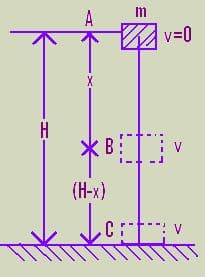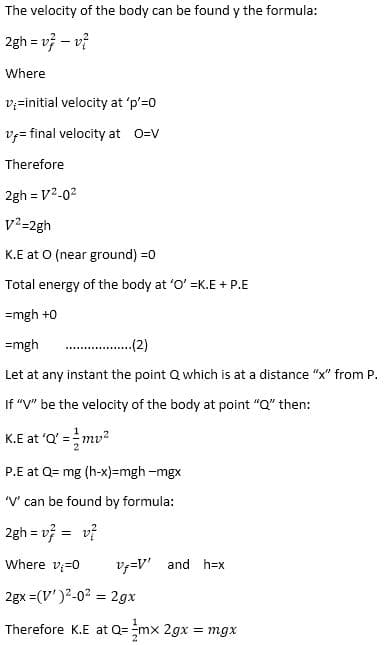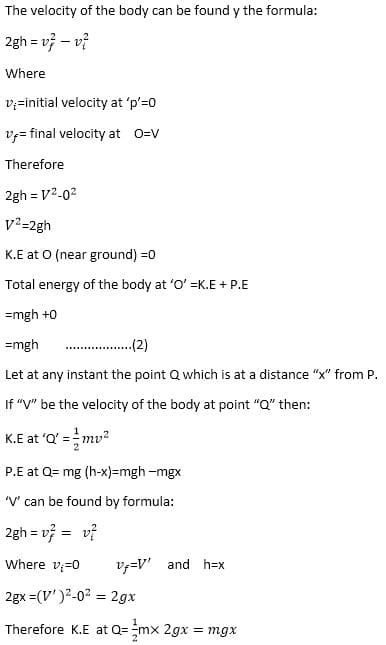According to the law of conservation energy: “Energy can neither be created nor is it destroyed. It can only be transformed from one form to another. A loss in one form of energy is accompanied by an equal increase in other forms of energy. In rubbing our hands we do mechanical work which produces heat,i.e, it is a law of conservation of energy example.
Mechanical energy = Heat energy + losses
Explanation:
The kinetic and potential energies are both different forms of the same basic quantity, mechanical energy. The total mechanical energy of a body is the sum of the kinetic energy and potential energy. In our previous discussion of a falling body, potential energy may change into kinetic energy, and potential energy changes into kinetic energy, but the total energy remains constant. Mathematically it is expressed as:
Total Energy = P.E + K.E = Constant
It is one of the fundamental laws of physics. We daily observe many energy transformations from one form to another. Some forms, such as electrical and chemical energy, are more easily transferred than others, such as heat. Ultimately all energy transfers result in the heating of the environment and energy is wasted. For example, the P.E of the falling object changes to K.E., but on striking the ground, the K.E. changes into heat and sound. If it seems in an energy transfer that some have disappeared, the lost energy is often converted into heat. This appears to be the fate of all available energies and is one reason why new sources of useful energy have to be developed.
According to Einstein’s mass-energy relation:
E= m c², energy can be converted into mass and mass can be converted to energy. Pair production is an example of the conversion of energy into mass.
On the other hand, nuclear fission and nuclear fusion are examples of the conversion of mass into energy.
Conservation of Energy formula
Total energy = kinetic energy + potential energy
conservation of energy equation

Consider a body of mass “m” placed at a point “p” which is at a height “h” from the ground.
P.E of the body at A = mgh
K.E of the body at point A =0
The total energy of the body at point P=K.E +P.E =0 + mgh
Total energy at P= mgh …(1)
If the body is allowed to fall freely under the action of gravity then its potential energy will go on decreasing while its kinetic energy will go on increasing.
Just before hitting the ground the potential energy of the body will be minimal or zero while the K.E of the body will be maximum. If “v” be the velocity of the body just before hitting the ground then K.E of the body=½mv².


Total energy at Q =K.E + P.E
=mgx + mgh – mgx
Total energy at Q = mgh ————(3)
From equations (1),(2) and (3) it can be seen that the total energy of the body remains constant everywhere provided there is no force of friction involved during the motion of the body.
If there is some force of friction acting on the body then the friction of P.E is lost in doing work against the force of friction. Thus:
Total energy =K.E + P.E + Loss of energy or work is done against the force of friction.
Law of conservation of energy example
- When we switch on an electric bulb, we supply electrical energy to it which is converted into heat and light energies.i.e.
Electrical energy = Heat energy + Light energy
- Fossil fuels e.g coal and petrol are stores of chemical energy. When they burn, chemical energy is converted into heat energy i.e.
Chemical energy = Heat energy + losses
- The heat energy present in the steam boiler can be used to derive a steam engine. Here heat energy is converted into kinetic (mechanical energy) ,i.e.
Heat energy =Mechanical energy + Losses
Related topics in our website are: